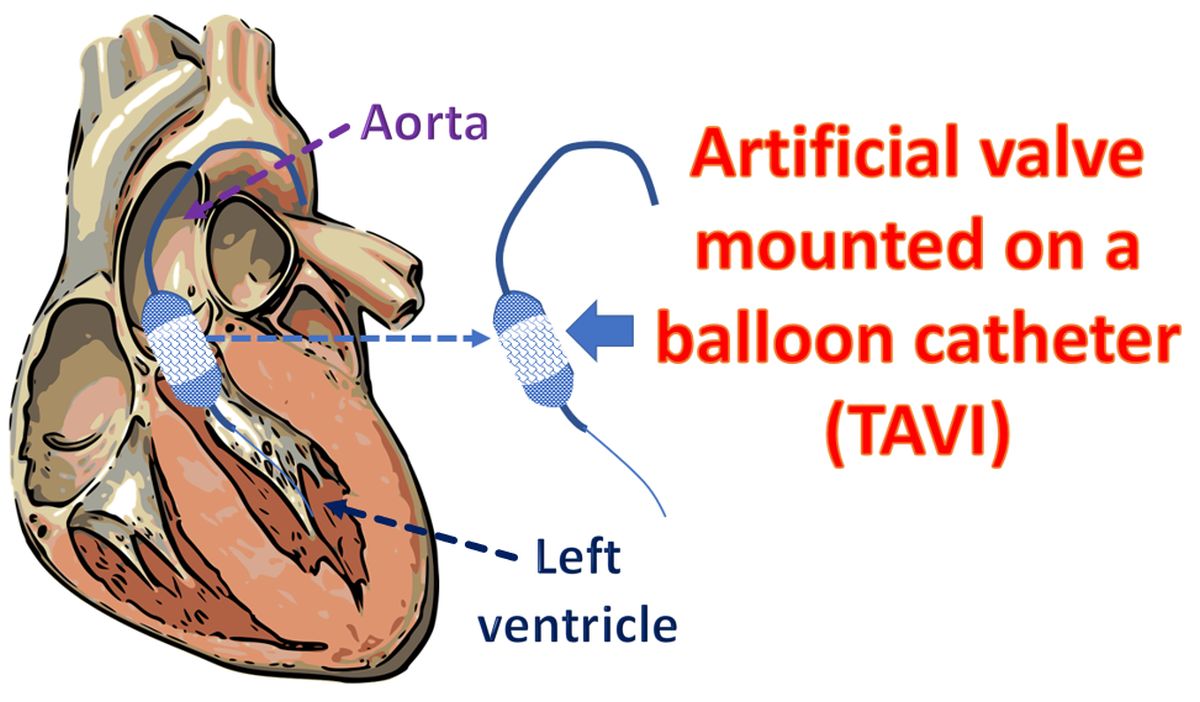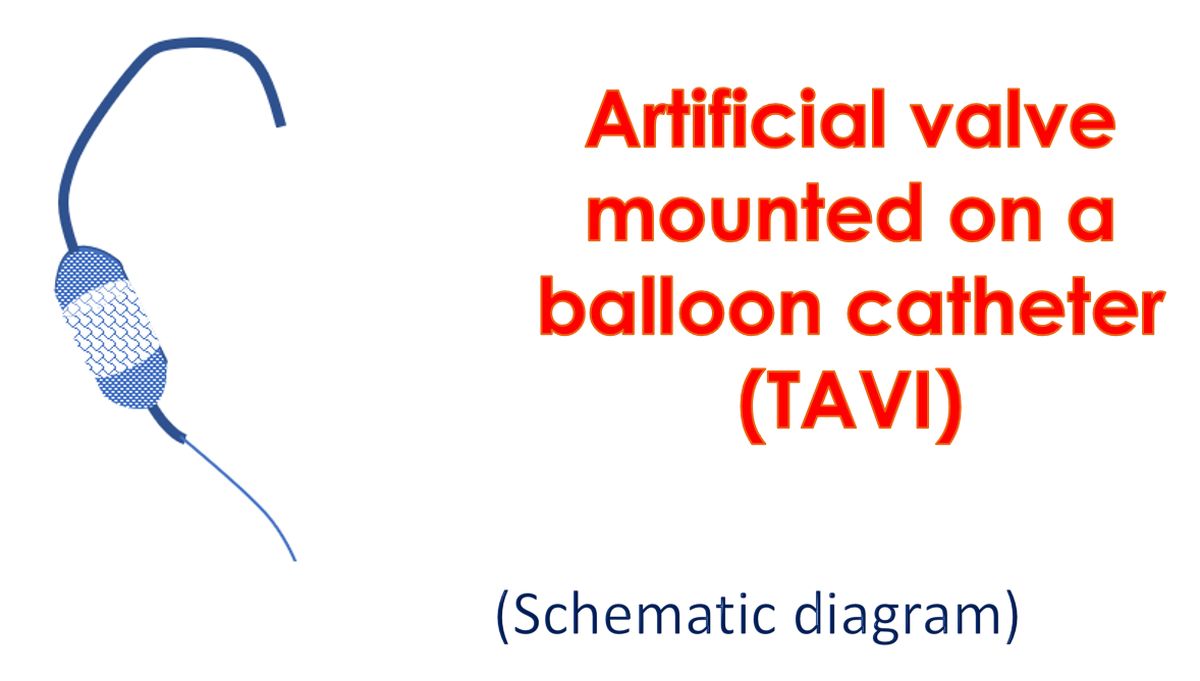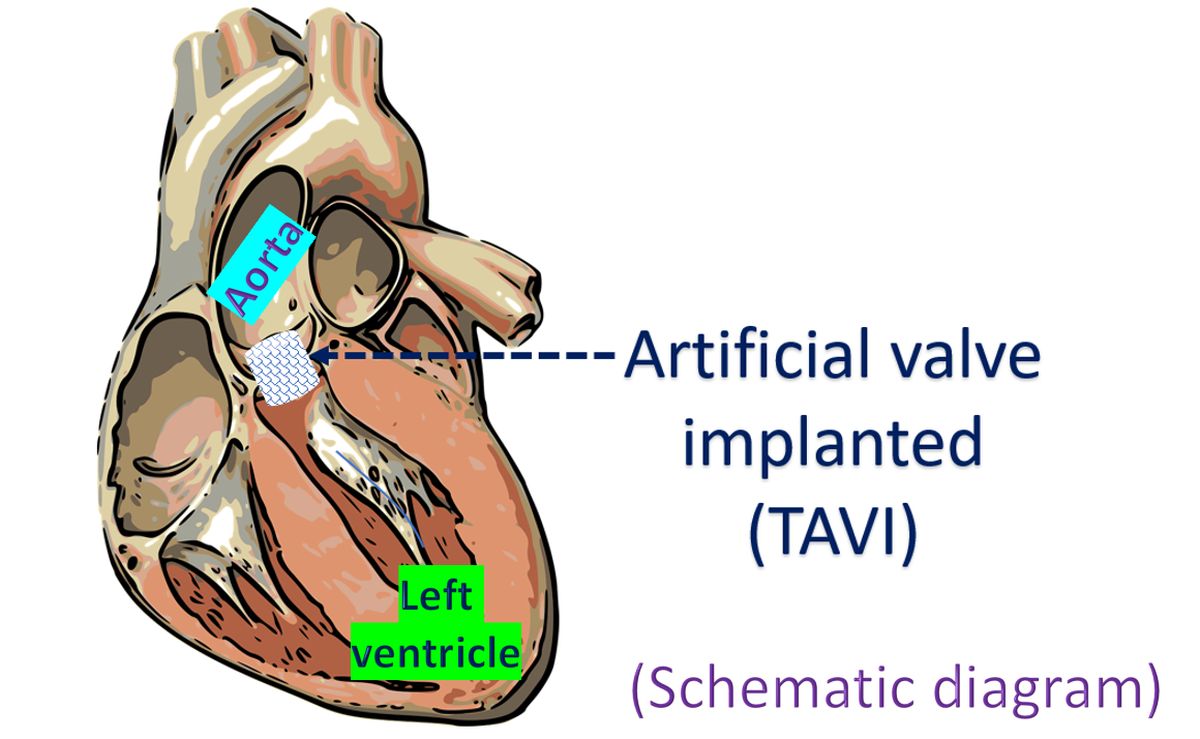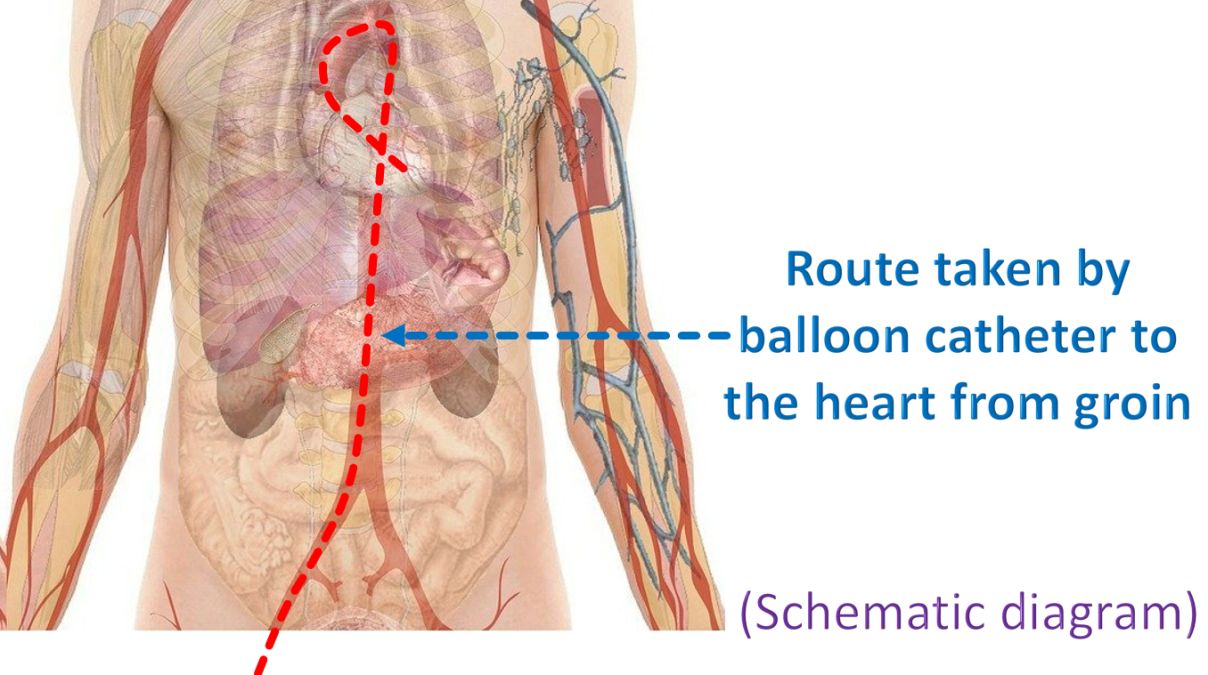What is TAVI?
What is TAVI?
TAVI is short form for transcatheter aortic valve implantation. It is also called TAVR (transcatheter aortic valve replacement). Aortic valve is the valve between the aorta and the left ventricle. Aorta is the largest blood vessel taking oxygenated blood to the whole body. Left ventricle is the lower muscular chamber of the heart which pumps oxygenated blood to the whole body. When the aortic valve is severely damaged, earlier it used to be repaired or replaced surgically. Now we have the option of implanting a valve without surgery, through tubes introduced through small holes in the blood vessels of the groin.

When TAVI was initially introduced, it was done only for those at very high risk for surgery. But as the procedure was perfected and the features of the device improved with better technology, it is now being recommended for those with aortic valve disease and low risk for surgery as well. As of now the valve used for TAVI is quite expensive but the cost will gradually come down as the number of procedures being done worldwide increases.

In TAVI an artificial valve is mounted on small tubes known as balloon catheters. The device is introduced into the blood vessel of the groin through small holes made in the skin under local anaesthesia. It is guided up to the aortic valve through the aorta with X-ray imaging guidance. Once the position of the artificial valve across the aortic valve is confirmed, the balloon is inflated using a syringe like mechanism attached to the other end of the device. The balloon catheter is withdrawn once the valve has been successfully implanted.

As the procedure is done for a severely narrowed native aortic valve or a previous surgically implanted valve, initial enlargement of the narrowed valve with balloon alone is done to prepare for the implantation of the artificial valve. After the TAVI procedure, the opening in the groin and the blood vessel of the groin are closed to prevent back bleed. When the blood vessel in the groin is narrowed due to disease as in elderly individuals, they may have to be enlarged prior to TAVI for the relatively bulky device to pass through. Another option in such persons is to directly enter the left ventricle with device using a small surgery of the chest which does not involve splitting of the breast bone (sternum) as is usual for open heart surgery for aortic valve replacement or repair.

In general, surgical replacement of the aortic valve is preferred in those below 65 years while TAVI is the choice for those above 80 years. For those between 65 years and 80 years, both options can be contemplated, weighing the risks and benefits in each case, taking into consideration the person’s preference as well.



